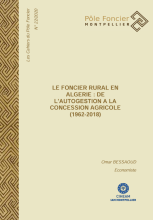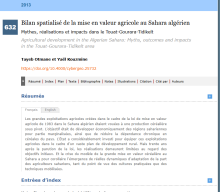Land Library
Welcome to the Land Portal Library. Explore our vast collection of open-access resources (over 74,000) including reports, journal articles, research papers, peer-reviewed publications, legal documents, videos and much more.
/ library resources
Showing items 1 through 9 of 1745.Jordan is one of the world's most water-deficit countries with only about 4% of the total land area considered arable. As a consequence agricultural production is greatly constrained by limited natural resources.
The Palladium research team visited Jordan in October 2019, and hosted roundtables in Amman and the Netherlands to collect and validate the collected information.
This analysis examines agricultural investment in the Mekong region, focusing on Cambodia, Laos, and Vietnam, to promote Responsible Agricultural Investment (RAI).
The Mekong Region has experienced rapid agrarian change over the past two decades, driven by public sector policies promoting agricultural commercialisation to alleviate rural poverty, provide income opportunities, and modernize agricultural production systems.
Los sistemas alimentarios y las estructuras agrarias han cambiado mucho a nivel global en las últimas décadas, con lo que han creado o reforzado algunas tendencias en el agro.
Ce cahier fait la synthèse des dynamiques du foncier rural en Algérie depuis les années 1960. Il analyse en trois temps le processus de transition qui a conduit le pays de l’autogestion à la concession des terres observé au cours de ces cinquante dernières années.
Les grandes exploitations agricoles créées dans le cadre de la loi de mise en valeur agricole de 1983 dans le Sahara algérien étaient vouées à une production céréalière sous pivot.
Après un rappel de l’héritage colonial et une critique du mythe de la prospérité coloniale, l’étude évoque les principales transformations opérées au cours des premières décennies (1960-1970) sous l’effet des politiques de réformes agraires (autogestion et révolution agraire), ainsi que les raiso
This paper presents the pilot experiences with a contributory model to customary land registration in Northern Uganda and discusses the potentials, challenges, and recommendations for further scaling up.








